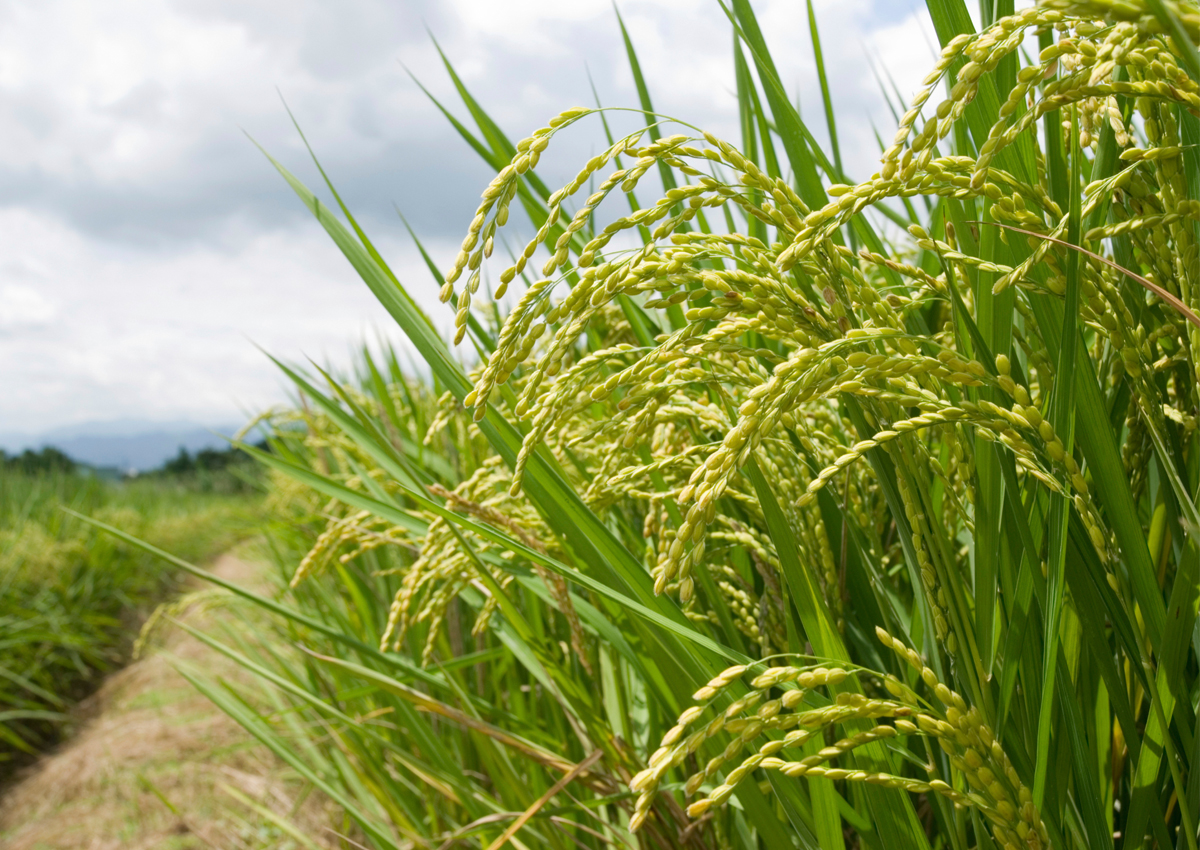
Rice Genetically Engineered to Resist Extreme Heat also Produces Up to 20% More Grain
April 29, 2020| |
As plants are exposed to light, the protein complex photosystem II (PSII) energizes electrons to help power photosynthesis. But heat or intense light can damage a key subunit, known as D1, and stop PSII's work until the plant makes and inserts a new D1 into the complex. Chloroplasts have their own DNA, including a gene for D1, and most biologists assumed the protein had to be made there.
A research team led by plant molecular biologist Fang-Qing Guo of the Chinese Academy of Sciences believe that D1 made by a nuclear gene could work just as well—and be made more efficiently, as its synthesis in the cytoplasm instead of the chloroplast would be protected from the corrosive by-products of photosynthetic reactions. Guo's team tested the idea in Arabidopsis, and took its chloroplast gene for D1, coupled it to a stretch of DNA that turns on during heat stress, and moved it to the nucleus.
The team found that the modified Arabidopsis seedlings could survive extreme heat in the lab—8.5 hours at 41°C—that killed most of the control plants. The same Arabidopsis gene also protected tobacco and rice. The more remarkable discovery was found at what happened at normal temperatures. Engineered plants of all three species had more photosynthesis. Tobacco's rate increased by 48% and grew more than the control plants. In the field, transgenic rice yielded up to 20% more grain. The modified Arabidopsis had 80% more biomass than controls. "It truly surprised us," Guo says. "I felt that we have caught a big fish."
For more details, read the article in Science.
| |
You might also like:
- Scientists Discover Protein which Boosts Rice Yield by 50 Percent
- Knockout of the OsNAC006 TF Causes Drought and Heat Sensitivity in Rice
- Experts Pinpoint Transcription Factors Vital in Rice Caryopsis Filling
Biotech Updates is a weekly newsletter of ISAAA, a not-for-profit organization. It is distributed for free to over 22,000 subscribers worldwide to inform them about the key developments in biosciences, especially in biotechnology. Your support will help us in our mission to feed the world with knowledge. You can help by donating as little as $10.
-
See more articles:
-
News from Around the World
- Global Report Reveals Scope of Food Crises as COVID-19 Poses New Risks to Vulnerable Countries
- New Video: We are ISAAA
- Rice Genetically Engineered to Resist Extreme Heat also Produces Up to 20% More Grain
- 10-year Post-Market Evaluation in EU Reports No Adverse Effects by GM Maize MON810
-
Research Highlights
- Zeaxanthin‐rich Tomato Fruit Developed Through Genetic Manipulations of Carotenoid Biosynthesis
- Brightest Engineered Plants Glow Throughout Life Cycle
-
Plant
- Genome-edited Camelina Receives Positive Response from USDA APHIS, Field Trial Proceeds
- Ag-economist Pushes for Regulatory Reforms, Renewed Public Debate on New Plant Breeding Techniques
-
Health
- FAO, IFAD, World Bank, and WFP Joint Statement on COVID-19 Impacts on Food Security and Nutrition: Countries Must Work Together to Ensure Food for All
- Nanoengineers Combine Molecular Farming and Advanced Manufacturing to Develop COVID-19 Vaccine
-
Read the latest: - Biotech Updates (November 12, 2025)
- Gene Editing Supplement (October 29, 2025)
- Gene Drive Supplement (February 22, 2023)
-
Subscribe to BU: - Share
- Tweet

